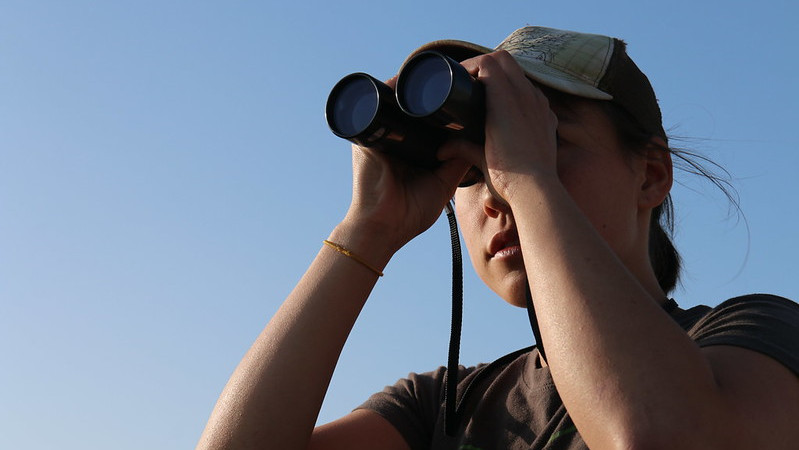Distance sampling: Analysis with R
Estimate species density and population size using R, for wildlife researchers, conservation project officers and field staff
- 4 weeks part-time from 16 September 2024
- Determine which factors affect the density of species of conservation concern
- Analyse sighting data from line transects or point counts
- Gain confidence in reporting the results of your monitoring or research
- Online course: 4 weeks part-time from 16 September 2024
Upcoming learning opportunities are listed on our Learning page, or you can join our mail-list to stay informed about future courses, events and resources
Gathering the evidence base for conservation action takes time and skill. You might need to learn distance sampling analysis because:
- 😓 The hard work of your field team is wasted because no-one knows how to analyse and gain insights from their sightings data
- 📉 You’ve been given historic transect data to analyse, to reveal trends in the population size of endangered species
- ✅ Your supervisor recommends distance sampling for your research or monitoring project
We know it can be overwhelming when you need to learn a new technique 😬
We’re here to help!
About the course
Our online course Distance sampling: Analysis with R equips you to turn field data into a deeper understanding of species of conservation concern
You’ll find this course useful if you need to:
- Investigate species ecology, in particular the factors affecting population size
- Analyse wildlife observations from line transect or point count data
- Refresh the skills you’ve learned in the past, but need to move beyond theory to analysis
- Adapt your existing knowledge to the R programming environment in order to work effectively with colleagues or collaborators
Learning objectives
By the end of this course you will be able to:
- Import field data into R
- Compare statistical models which represent your different hypotheses
- Interpret the R output statistically and ecologically
- Extract density & detectability estimates
- Evaluate the importance of variables which affect density and detectability
Course dates
This four-week tutored course starts on Monday 16 September 2024 and ends on Friday 11 October 2024
Study time is 3-5 hours each week. The timing is completely flexible - you can participate whenever it suits you during the week
Course fees and discounts
The fee for this course is 144 GBP
We offer generous discounts (up to 90% off!) to those who can’t afford the standard course fee:
- Conservationists from low- or middle-income countries1
- Students and currently unwaged
Everyone gets access to the same learning activities and support. If you or your organisation can afford it, paying the higher fee enables VerdantLearn to keep offering courses at affordable prices for everyone. This supports the efforts of conservationists globally, and increases the diversity of learners on our courses, so you benefit too!
To find out what discount you’re eligible for, and gain a coupon code, please complete the form on our discount enquiries page:

I’m happy I found [this course] (my PhD advisor made it possible) and I’ve learned a lot. I think the way you teach is great and the tools you use to practise the understanding of some topics are amazing, it makes me want to do all the classes again 😄
The best was to be able to share my opinion and get to talk to other students about the assignments
Student on GIS for wildlife conservation beginner course
Any questions?
Visit our Frequently Asked Questions, or contact us
So, are you eager to dive into analysing your transect or point count data with R…?
Join our mail-list to stay informed about future courses, events and resources
Footnotes
World Bank list of countries by income level↩︎

